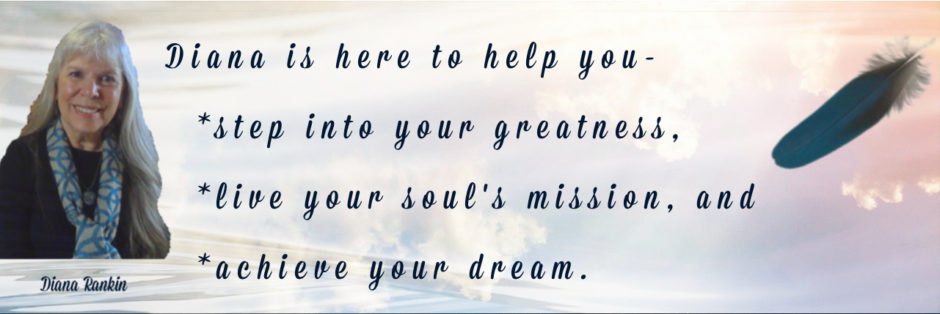If we remember all emotion is either fear-based or love-based, it’s easier to move from the fear emotions to love emotions.
We all experience fear, anger, upset, anxiety, stress, sadness, jealousy, and so on. Fear-based emotions lead to our feeling disconnected from others, even from our own lives. Fear-based emotions are rooted in our sense of survival instincts. They trigger our fight-or-flight response.
These fear-based emotions are natural. They help us process information, may even keep us safe. So, it’s not about never feeling any fear-based emotions. It’s about recognizing what we are feeling, taking any necessary action, and then working through those feelings. When we stop being overwhelmed by fear emotions, we are able to experience love and joy.
Love-based emotions, such as joy, compassion, empathy, gratitude, and so on, arise from a sense of safety, connection, and well-being. We need to cultivate these emotions so we can move into them whenever we choose.
It’s helpful if we know what triggers our fear-based emotions. Journaling, talking with someone, meditation, are a few ways we can learn about those triggers so we can recognize the fear-based emotions when they arise.
Once we 1.) recognize the feeling; 2.) take action if needed to be safe; 3.) work through the feelings; 4.) we are ready to make the conscious decision to change a fear-based emotion into one that is more positive and loving. This does not necessarily happen overnight. It takes patience and practice.
Following are 12 ways that you can use to change a fear-based emotion to a love-based emotion.
- Music can change our moods rapidly. Be aware what you’re listening to. For example, if you’re driving in heavy traffic and stressed because you’re running late, try listening to classical or easy listening music or songs you like that you can sing/hum along with.
- If you’re in public and the crowds are getting to you, smile at strangers. They may or may not smile back. This works even in cities where people normally ignore one another. Even if no one smiles back, you’re changing your emotional energies as you smile. This works even if you’re alone.
- Imagine you’re in a favorite spot such as relaxing on a beach, hiking in the mountains, curled up on your couch with a dog or cat, looking into a loved child’s eyes, etc. If one imagined scene doesn’t work, try to imagine something else. Our imaginal minds can do wonders for our moods.
- Ask for a hug. Studies show our health benefits from hugging including reducing fear, stress, and pain. Hugs also support immune and cardiovascular health. No one around to hug you? Use a small blanket, wrap it around you, close your eyes, and feel the hug. Using the imaginal mind helps here too as you can imagine that blanket is someone you feel loved by.
- Ask someone to listen, really listen. We all need to be heard to vent or express our fears, our sadnesses, our angers. A kvetch buddy is helpful as long as you agree to listen to one another. For friendships/relationships to be healthy and last, there needs to be equal give and take. It may not always be at the same time; it does have to equal out.
- Post positive words and pictures where you can see them. You might add a short note to your pocket or purse; post a note on the bathroom mirror, etc.
- Buy several cards or postcards that make you feel good. Mail one to yourself each week. The art of sending someone a card has gone by the wayside, replaced by electronic messages. Receiving a card lifts the spirit in a way electronic messages don’t. When you’re caught in a fear-based emotion, write a note to yourself on one of the cards, put a stamp on it, and then mail it. Do this even if you’ve already mailed your weekly card. The expectation of knowing the card is coming to you will pick up your spirits.
- Slow down and breath. Fear-based emotions often overtake us when we’re head-over-heels busy. We actually accomplish less when we’re overwhelmed. So, take a deep breath in through the nose, hold it, now release it through the mouth. Do this again until you feel your shoulders relax and your emotions move from stress to calm. If you’re angry at someone, simply say bless you on the breath in and bless me on the breath out. This will help to change the energy between you.
- Practice self-compassion. This involves treating yourself with kindness and understanding, especially when in difficult times or when you just can’t get past the fear-based emotion. Acknowledge the struggles and stop judging yourself.
- Shift your focus to gratitude. For example, when you feel anger at a situation, stop, take a breath, and think about the gifts in the situation. You might find that all that impatience while waiting in the grocery store line kept you from being involved in a vehicle accident.
- Challenge the fear-based emotion. Question the validity of the emotion. Ask yourself questions such as: Do I want to feel this way? Does feeling this way make my life better? What is another way I could feel about this person or situation?
- Move, dance, exercise. Physical activity releases endorphins, which are natural mood lifters.
Transitioning from fear-based emotions to love-based emotions is a journey that requires patience, practice, and self-awareness. It’s a journey that leads to a more loving, calmer, peaceful, and happier life. It’s a journey well worth the effort.
